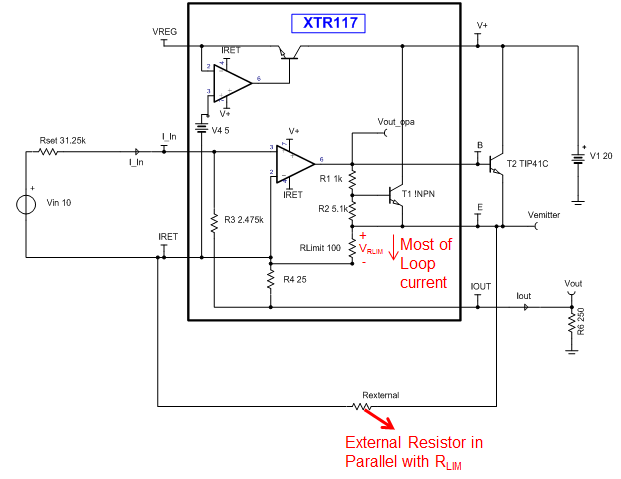Other Parts Discussed in Thread: XTR115, XTR110, XTR111
Hi,
i'm looking for a way to use XTR117 with 4-20mA 2-wire and 0-10V 3-wire jumper selectable.
There are many of sensors working like this in the market and i need to follow this model. My first design was like this:
The problem is that the Iret current seems to be the minimum current i can see in the OUT, so i can't see values near zero on 0-10V.
Is there a way to use multiple jumpers to force component's current to make another path, or any other XTR component that i can use for both 4-20mA 2-wire and 0-10V 3-wire?
Thanks,
Rodrigo



